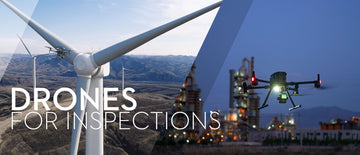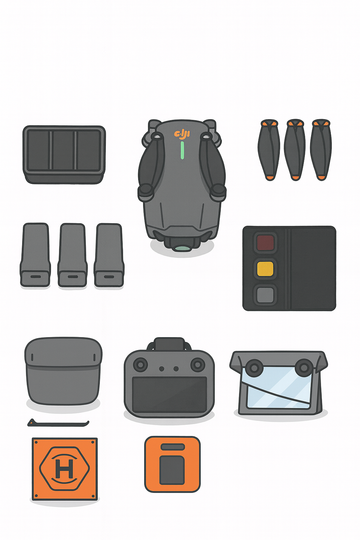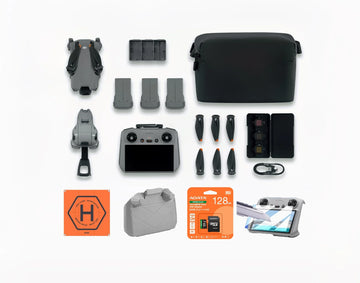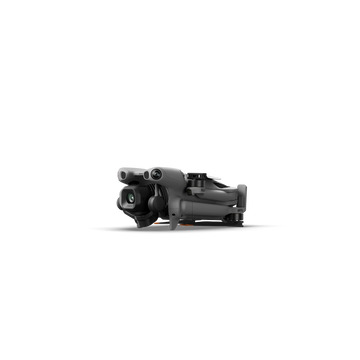Deploying drones at enterprise scale transforms how organizations inspect assets, survey sites, and respond to incidents. However, success hinges on much more than selecting the right hardware—it requires a cohesive strategy encompassing clear objectives, regulatory compliance, skilled pilots, standardized processes, robust data pipelines, and continuous performance measurement. Below, we outline the nine key steps to build and grow an enterprise drone program that delivers real business value.
1. Define Objectives and Use Cases
Begin by aligning your drone program with strategic priorities. Common enterprise applications include:
- Infrastructure Inspection: Automate tower, pipeline, and bridge assessments.
- Surveying & Mapping: Generate orthomosaics, digital elevation models, and volumetrics.
- Public Safety & Emergency Response: Provide aerial oversight for search & rescue or disaster assessment.
- Agriculture & Environmental Monitoring: Track crop health and habitat changes.
For each use case, quantify target outcomes—e.g., reduce inspection time by 50%, improve mapping turnaround from days to hours, or increase safety by eliminating manual climbs.
2. Navigate Regulatory & Compliance Requirements
In Canada, enterprise operations must meet Transport Canada’s rules:
- Pilot Certification: Obtain Advanced Operations certification for flights beyond visual line of sight or near bystanders.
- Drone Registration: Mark and register all UAVs over 250 g.
- Flight Approvals: Secure Special Flight Operations Certificates (SFOCs) for restricted zones or complex missions.
Develop a compliance calendar for certificate renewals, airspace notifications, and insurance renewals to keep your program audit-ready.
3. Select Platforms & Payloads Strategically
Match drone hardware and sensors to your objectives:
- Fixed-Wing vs. Multirotor: Fixed-wing gives longer endurance for mapping; multirotors excel at vertical inspection and hover.
- Sensors: Choose thermal, LiDAR, multispectral, or high-zoom RGB based on data needs.
- Enterprise Features: Look for IP-rated airframes, RTK/PPK positioning, encrypted transmission, and dual-operator modes.
Pilot a handful of candidate models—such as the Matrice 300 RTK for inspections or the Mavic 3 Enterprise for rapid surveys—and compare flight endurance, ease of deployment, and data quality before committing to fleet-wide purchases.
4. Develop a Pilot Training & Certification Program
Consistent, high-quality flights begin with well-trained pilots. Components of an enterprise training curriculum include:
- Classroom Theory: Air law, meteorology, flight dynamics, human factors.
- Simulator Practice: Risk-free introduction to controls and emergency procedures.
- Field Exercises: Standardized missions under instructor supervision, covering takeoff/landing, sensor operation, and contingency handling.
- Ongoing Assessment: Quarterly re-checks and scenario-based drills to reinforce skills.
Consider partnering with SpeedyDrone Canada for customized Advanced Operations workshops and flight safety coaching.
5. Establish Standard Operating Procedures & Safety Protocols
Document every step of your drone missions to ensure consistency and mitigate risk:
- Pre-Flight Checklist: Battery health, firmware status, NOTAM checks, weather review.
- Emergency Procedures: Lost-link recovery, fly-away prevention, forced-landing protocols.
- Post-Flight Reports: Vehicle condition logs, incident records, data handover.
Embed safety culture by requiring pilot sign-off on checklists and regular safety-brief refresher sessions.
6. Implement Maintenance & Fleet Management
A scalable program demands reliable uptime:
- Scheduled Maintenance: Follow manufacturer guidelines for prop, motor, and battery inspections.
- Spare Parts Inventory: Stock critical spares (propellers, arms, batteries) to minimize downtime.
- Fleet Tracking: Use asset-management software to log flight hours, maintenance events, and warranty status.
Automate maintenance reminders and end-of-life alerts so no vehicle flies past its recommended service interval.
7. Build Robust Data Collection, Processing & Integration
Drones generate raw imagery, LiDAR point clouds, and telemetry that must feed into your decision-making systems:
- Data Offload: Securely transfer mission files to a centralized server.
- Processing Pipelines: Automate stitching, orthomosaic generation, or 3D modeling with tools like DJI Terra or Pix4D.
- GIS/ERP Integration: Connect processed outputs to enterprise platforms (e.g., ArcGIS, Maximo) via APIs or standardized formats (GeoTIFF, LAS).
- Access Controls: Implement role-based access to sensitive data—thermal scans of critical infrastructure or site layouts.
Well-architected data workflows turn flight logs into actionable dashboards for maintenance planners, engineers, and operations managers.
8. Define KPIs & Measure ROI
Track both operational metrics and business outcomes:
- Operational KPIs: Flight hours per week, mission success rate, average downtime.
- Data Quality KPIs: Georeferencing accuracy, image overlap consistency, data processing time.
- ROI Metrics: Cost savings (reduction in manual inspections), revenue uplift (faster project bids), safety improvements (incident reductions).
Review these KPIs monthly to spot bottlenecks—such as excessive re-flights due to poor data—and adjust training or processes accordingly.
9. Scale & Continuously Improve
As your program matures:
- Expand Fleet Gradually: Add specialized platforms (e.g., VTOL for long ranges, micro-drones for confined spaces).
- Cross-Train Staff: Develop a multi-disciplinary team of pilots, data analysts, and maintenance technicians.
- Leverage AI & Analytics: Integrate automated defect detection, change-detection algorithms, or predictive maintenance models to further accelerate insights.
- Governance Framework: Institute a drone-program steering committee to oversee budgets, policies, and technology roadmaps.
By treating your enterprise drone initiative as an evolving business unit—rather than a one-off project—you’ll unlock sustained efficiencies, richer data insights, and competitive advantage.
Conclusion
A scalable drone program goes well beyond equipment procurement. By clearly defining objectives, ensuring regulatory compliance, investing in pilot proficiency, standardizing operations, and building seamless data pipelines, organizations can harness the full power of aerial technology. If you’re ready to take the next step, SpeedyDrone Canada offers end-to-end enterprise solutions: from hardware selection and pilot training to data integration and support. Visit us at 991 Bay St, Toronto, or explore our enterprise services online at speedydrone.ca to design a drone program that truly elevates your business.







